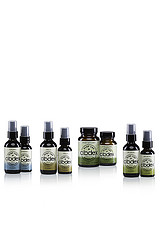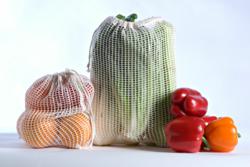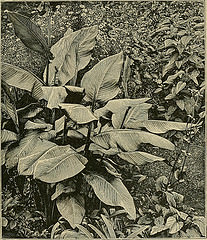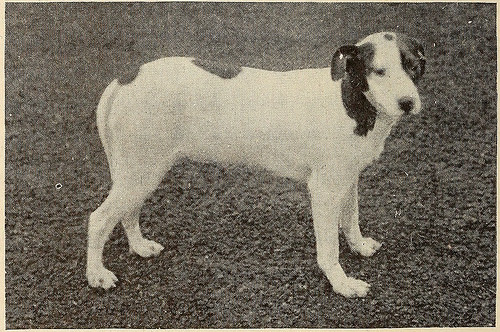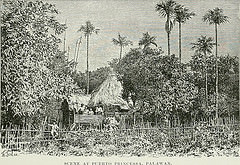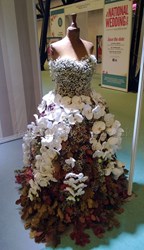Schofield, WI (PRWEB) March 24, 2014
PuraMed BioScience®, Inc., (OTCBB:PMBS), a researcher, developer, and marketer of over-the-counter (OTC) medicinal and healthcare products, confirmed today that it is seriously exploring the development of cannabinoid and hemp-based formulations to expand its natural and homeopathic product line.
PuraMed BioScience initially intends to develop and manufacture hemp and THC-free formulations that create medicinal compounds that don’t produce the “high” associated with cannabis containing THC. Scientific research has shown that cannabinoids can be formulated to effectively treat conditions such as multiple sclerosis, Crohn’s disease, pain, neurodegenerative disorders, epilepsy, arthritis and combat the effects of cancer chemotherapy.
“Integrating cannabinoid-based medications into our product line makes sense with what we are already doing,” said Russell Mitchell, CEO of PuraMed BioScience. “Cannabis has been used medicinally for centuries. It has only been in the last 100 years that its schedule 1 drug status and the abuse of this product for non-medicinal purposes has detracted from its medicinal benefits. Medical journal publication sites list many medical articles that report cannabinoids provide a viable treatment to neurologic problems, inflammatory diseases, and pain.
“Due to recent changes in the legality and availability of cannabinoids, we believe the future looks extremely bright for the development of highly effective and safe treatments incorporating these hemp derived compounds,” said Mitchell.
Scientific evidence continues to grow as to the effectiveness and safety of certain cannabinoids used to treat a number of disease states. In his article, ‘I am doubling down’ on medical marijuana, published on CNN Health, Dr. Sanjay Gupta, practicing neurosurgeon and CNN Chief Medical Correspondent, confirms his previous article apologizing for dismissing the plant’s potential.
Dr. Gupta has seen first-hand the benefit of this substance in the lives of people as shown in his documentaries Weed and Weed2, which recently aired on CNN. During his documentaries, Dr. Gupta stated that, unlike some prescription pain relievers, no one has died from an overdose of cannabis.
Even the United States government holds patents on cannabis-based formulations.
PuraMed BioScience has been investigating this market for nearly two years and found that cannabinoids offer a structure and function that fits ideally with several of its existing technologies. “We have been following the studies that currently are being conducted in Israel,” said Mitchell.
The company has researched the potential efficacy of cannabinoid-based pain treatment for patients with rheumatoid arthritis and chronic back pain and found that there was evidence of a high probability of success. PuraMed believes that a combination of cannabinoids with other natural compounds can provide superior results while avoiding the often severe side effects of many of the prescription treatments.
“The results of our preliminary research combined with the fact that the US cannabis market is expected to grow to over $ 10 billion by 2018, are strong reasons to aggressively develop a cannabis and hemp-based product line,” said Mitchell. “Development of these products will continue our mission of providing safe, effective products that use natural ingredients.
“We are particularly interested in the development of a formulation that will help veterans who are suffering the effects of Post Traumatic Stress Disorder (PTSD),” said Mitchell. “An effective PTSD formulation in addition to our LipiGesic® M migraine product would allow us to provide veterans with two effective medications to relieve these debilitating conditions.”
According to reports, on March 14, 2014, Suzanne Sisley, a lead researcher at the University of Arizona received approval from the Public Health Service, a branch of the US Department of Health & Human Services to research medical marijuana’s effectiveness in the treatment of PTSD. This was the second of three approvals necessary to conduct the research. The research has been approved by the US Food and Drug Administration (FDA) and is awaiting approval from the Drug Enforcement Administration (DEA).
At this point in time, six states approve the use of medical cannabis for PTSD.
PuraMed BioScience intends to become a leader in the cannabinoid-based medicine market utilizing its proven ability to develop and produce highly effective plant based medicines. The company has historically used scientific and clinical studies to prove the efficacy and safety of its products. PMBS expects to lead the way in conducting the same level of validated science for any product that contains cannabinoids.
“We’ve produced a highly effective acute migraine medication using feverfew and ginger that has been clinically tested and found to provide efficacies that perform better than its prescription counterparts,” said Mitchell. “We have faced an uphill battle with the adoption of homeopathic drugs in the mainstream, but we see that changing as well.”
In the March 24, 2014 issue of Woman’s World, LipiGesic® M is featured in an article entitled, “No more migraine pain!” The combination of feverfew and ginger was a treatment for migraine was also mentioned in “Nature’s First Aid Kit” which appeared in the February 2014 issue of O The Oprah Magazine.
“Publication in these magazines proves that the public is beginning to embrace the idea of “natural and safe” medications made with homeopathic formulations,” said Mitchell. “As more of the public embraces natural medicinal products, we will continue to provide formulations that operate with the highest level of efficacy and safety, which will allow people to choose a natural alternative without compromising treatment outcomes.”
About LipiGesic M:
Results of a double-blind, placebo-controlled clinical trial for LipiGesic®M show LipiGesic M is a highly effective treatment for acute migraine. The study was published in the July 2011 issue of the top-tier medical journal, Headache: The Journal of Head and Face Pain. In addition to LipiGesic M, the Company also has plans to launch LipiGesic® H, tension headache remedy, as well as LipiGesic® PM, a remedy for insomnia and other sleep disorders.
Forward-Looking Statements:
This news release contains forward-looking statements regarding PuraMed BioScience, Inc., and its future business plans, which statements involve known and unknown risks and uncertainties. Such risks and uncertainties may cause actual results and future achievements of PuraMed BioScience to be materially different from those implied by these forward-looking statements. PuraMed BioScience has and undertakes no obligation to provide public updates and revisions to these forward-looking statements to reflect any changes in its expectations of future events.
Contact:
PuraMed BioScience, Inc.
Russell Mitchell, Chairman and CEO
715-359-6373
rmitchell(at)PuramedBioScience(dot)com
http://www.PuramedBioScience.com

